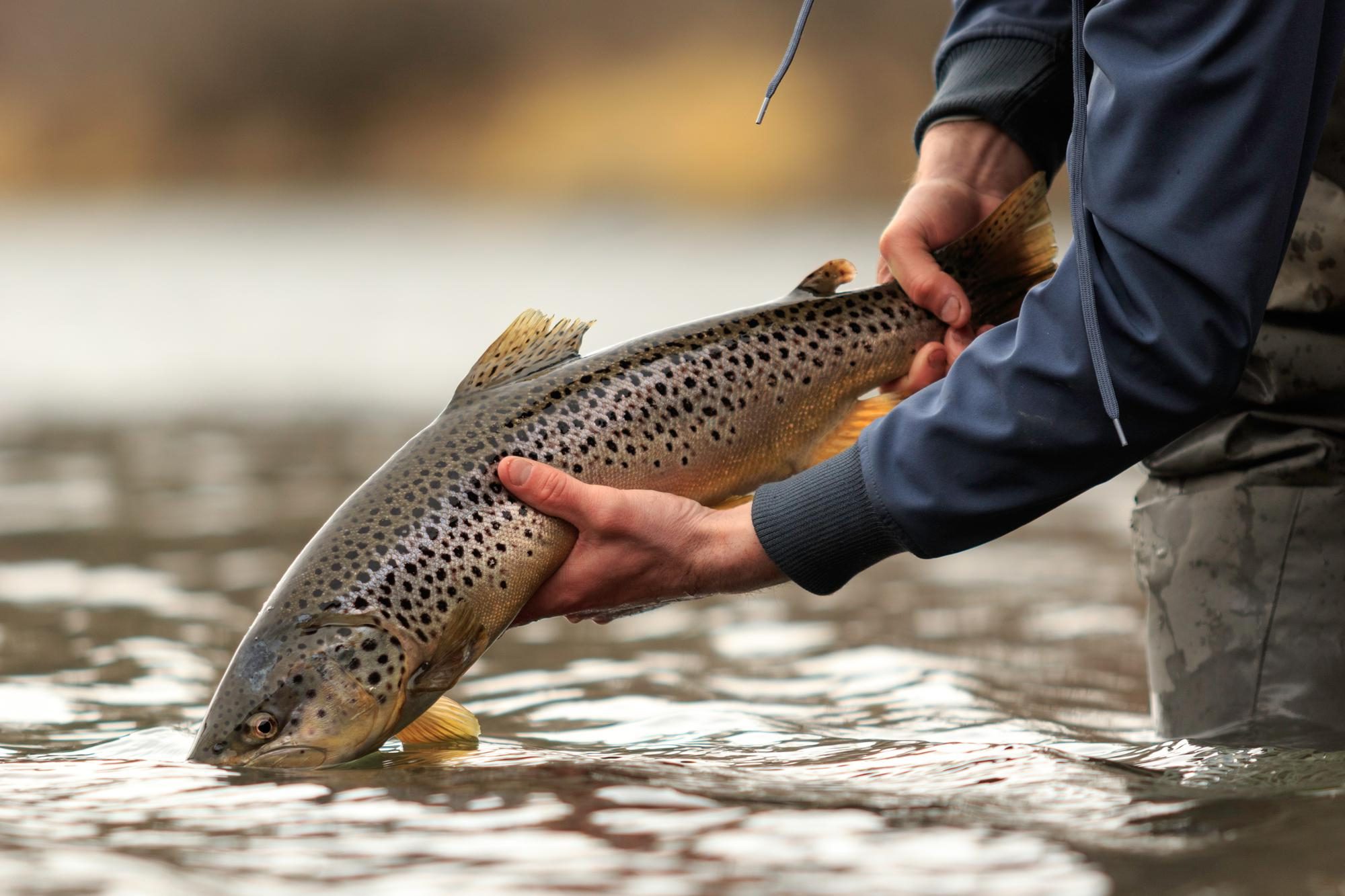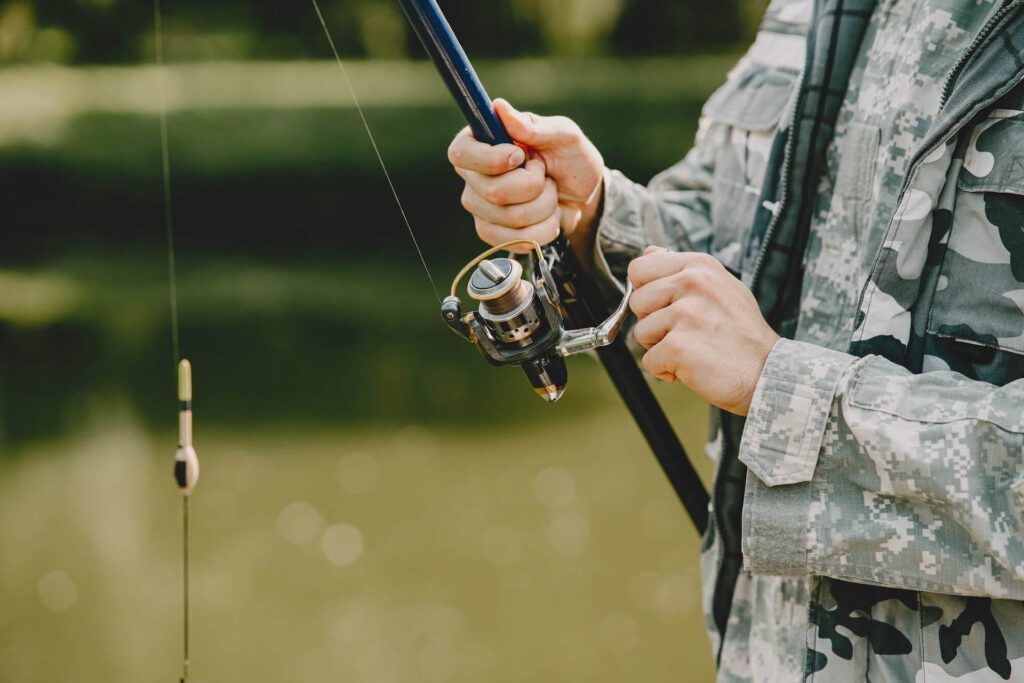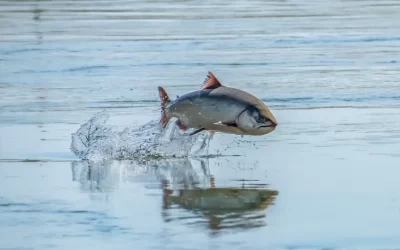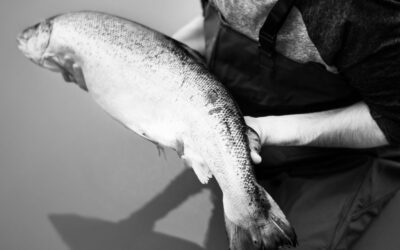There’s nothing quite like the serenity of a quiet lake, the thrill of the chase, and the satisfaction of a successful catch. While there are countless tactics and types of equipment to consider in the art of angling, today we’ll focus on an often-overlooked but highly versatile accessory: fishing beads. These tiny wonders might seem insignificant, but they play a crucial role in attracting fish and enhancing your fishing setup. This guide will teach you everything you need to know about fishing beads, from what they are, to how they’re used, the best fish to catch with them and much more.
Fishing beads are essentially small, usually spherical items that you can incorporate into your fishing line. Whether you’re a novice just starting out or an experienced angler looking to up your game, fishing beads are definitely worth knowing about. They’re employed in both fresh and saltwater environments and are especially useful for species like salmon, trout, and steelhead. Understanding the hows and whys of fishing beads will take your fishing experience to the next level.
Key Points
- What are Fishing Beads: Small, colorful beads added to fishing lines or lures to attract fish.
- Uses: Primarily used for imitating fish eggs, adding weight, or creating visual or auditory attraction.
- Types: Glass, plastic, metal, and rubber, each with their own pros and cons.
- Best Colors: Vary depending on the type of fish and water conditions, but commonly used colors include orange, pink, and red.
- Types of Fish: Effective for catching salmon, trout, steelhead, and more.
- Best Gear: Compatible with spinning reels, baitcasting reels, and even fly fishing setups.
- Weather Conditions: Ideal in overcast or cloudy weather when fish are more likely to be near the surface.
What are Fishing Beads?
Fishing beads are small, often spherical pieces added to fishing lines, either above the hook or on the lure. They are made from various materials like glass, plastic, metal, or rubber. These beads mimic the appearance of fish eggs, a natural food source for many types of fish. They can also add weight to your line or serve as a visual or auditory attractant to fish.
Types of Fishing Beads
Glass Beads
- Pros: More reflective, better at mimicking real fish eggs.
- Cons: Less durable, can shatter upon impact.
Plastic Beads
- Pros: Lightweight, durable, and cheap.
- Cons: Less reflective, might not be as enticing to fish.
Recommended Reading: Glass Beads vs Plastic Beads
Metal Beads
- Pros: Durable and can add significant weight to your line.
- Cons: Less natural-looking, can rust.
Rubber Beads
- Pros: Soft and buoyant, often used in fly fishing.
- Cons: Less durable, may tear easily.
Foam Beads
- Pros: Buoyant and light, another great option for fly fishing or clear rivers and lakes
- Cons: Less durable, difficult for sub-surface fishing

Best Colors for Fishing Beads
Selecting the right color for your fishing beads can often make the difference between a day full of action and one that’s, well, less exciting. Not all colors work equally well for every type of fish or in every fishing environment. Here are some of the most popular colors:
- Red
- Orange
- Pink
- Brown
- Green
Let’s dive a little deeper into the factors that can guide your color selection:
Consider the Type of Fish
Different species of fish are attracted to different colors. For example, salmon are known to be drawn to brighter shades like hot pink, fluorescent orange, or vivid red. On the other hand, trout may be more enticed by softer, more natural colors like brown, olive green, or light pink. Knowing your target fish helps in narrowing down your color choices.
Water Clarity Matters
The color of the water you’re fishing in is another factor to consider. In clear water, lighter colors like pink, peach, or clear beads with a metallic core are often effective. These shades mimic the natural coloration of fish eggs in such environments. In murkier waters, however, brighter and more fluorescent colors like orange, chartreuse, or even purple can be more visible to fish and thus more effective.
Seasonal Variations
The time of the year can also affect the color of the natural food sources in the water, so adapting your bead color to the season can make you more successful. For example, in early spring, paler shades like light pink or peach may be more effective as they closely resemble the natural colors of fish eggs during that period. In the fall, darker and more vibrant colors like dark red and orange may be more suitable.
Light Conditions
Last but not least, consider the amount of natural light when selecting your bead color. On bright, sunny days, lighter and more transparent colors often perform well, as they reflect the natural light, making them appear more genuine to the fish. During overcast or low-light conditions, brighter or even glow-in-the-dark beads can make your setup more visible and enticing to your prospective catch.
Experiment and Observe
Don’t hesitate to experiment with various colors to find out what’s working best for you on any given day. Often, fish can be picky, and what worked yesterday may not necessarily be effective today. Observing other successful anglers around you can also provide insights into what colors are performing well.
Choosing the right bead color is a combination of science, experience, and sometimes just a bit of good old-fashioned luck. The key is to be observant and willing to adapt—qualities that make any angler a successful one.

Types of Fish You Can Catch with Fishing Beads
When it comes to fishing beads, one might easily pigeonhole them as specialized tackle for catching salmon, trout, and steelhead. However, the applicability of these tiny wonders is much broader. The versatility of fishing beads can be harnessed for a wide range of fish species. Using fishing beads for saltwater fishing has even become more popular. Let’s delve into some of the types of fish you can target and why beads work for them.
Salmon
Salmon are perhaps the most popular target when it comes to fishing with beads. Beads effectively mimic salmon eggs, a favorite treat of these fish, especially during their spawning season. For salmon, opt for larger beads, typically in the range of 10-12mm, in bright colors like orange, red, or hot pink. The goal is to present a bead that simulates a freshly laid salmon egg.
Trout
Trout are opportunistic feeders that will readily consume fish eggs when they are available. Smaller beads, generally 6-8mm, in colors like peach, light pink, red or olive green work well. The translucent beads can also be very effective, especially in clear waters, as they mimic the delicate hue of trout eggs.
Steelhead
Steelhead, like their salmon cousins, are strongly attracted to beads, especially during spawning seasons when eggs are abundant. Steelheads prefer the brighter colors like orange and fluorescent pink. The bead size can be varied between 8-12mm depending on the water conditions and size of the fish.
Bass
Though not the first fish that comes to mind when discussing fishing beads, bass can indeed be caught with them. For bass fishing, you’re generally not trying to mimic eggs. Instead, the beads serve as attractors, adding a visual component to your lure. Colors like yellow, green, and even white can add that extra flash or contrast that entices a bass to strike.
Panfish
Yes, even the humble bluegill, crappie, and other panfish can be tempted with fishing beads. These species are more likely to be attracted to the smaller beads, usually in the 4-6mm range, and in colors like red, yellow, and even black. They’re a great addition to a small hook and worm setup or can be used above a micro jig.
Catfish
While not traditionally targeted with beads, some anglers have found success adding a bead or two above their bait when fishing for catfish. The bead adds an extra sensory attractant, drawing the catfish’s attention to your bait. For these bottom-dwellers, more muted colors like brown, dark green, or even gray could be effective.
Northern Pike and Muskie
For these aggressive, predatory fish, beads can be used not so much as a food imitation but as a way to add some flash and noise to your lure. Larger, metallic or brightly colored beads can provoke strikes from these toothy fish.
The versatility of fishing beads makes them applicable across a broad spectrum of fishing styles and target species. Whether you’re hiking to an alpine lake in search of trout or wading into a river swarming with spawning salmon, the right bead can turn a good day of fishing into a great one. Keep an open mind and don’t hesitate to experiment; you’ll find that these small additions to your tackle box can make a big difference.

Best Gear to Use With Fishing Beads
Choosing the right gear to accompany your fishing beads is as essential as selecting the beads themselves. The effectiveness of these small, colorful lures is often maximized when paired with the appropriate gear—rod, reel, line, and hook. Let’s explore how to make the best gear choices for fishing with beads in different scenarios.
Spinning Reels
Spinning reels are versatile and user-friendly, making them ideal for novice and experienced anglers alike. When using beads, go for a light to medium-light spinning reel for a balanced setup. This is particularly useful when targeting species like trout, panfish, or smaller salmon, which don’t require heavy-duty gear. The lighter setup allows you to present the bead more naturally, making it appear like a freely floating egg in the water.
Baitcasting Reels
For those who prefer baitcasting reels, particularly when targeting larger species like steelhead or large salmon, beads can be integrated successfully. With a baitcasting reel, you can use heavier lines and larger beads (10-12mm). This is beneficial in strong currents where you need extra weight to keep your setup in the strike zone. Beads made of glass or metal are often the go-to choices in such settings because of their added weight and reflectivity.
Fly Fishing Setups
Fly anglers, rejoice! Beads can also be a part of your arsenal. In fly fishing, rubber or foam beads are often the best choices. Their buoyancy makes them suitable for surface or near-surface presentations. They can be added to nymph rigs or even used in “egg-sucking leech” patterns. Light-colored beads are commonly used in these setups to mimic natural food sources found in the streams and rivers favored by fly fishermen.
Line Considerations
The type of fishing line you use with beads can make a significant difference in your success rate. Monofilament is often recommended for its buoyancy, allowing for a more natural drift in the water. Fluorocarbon can also be used, especially when you need the line to sink faster or in clear water conditions where you want the line to be less visible. The line strength should match the species you’re targeting; generally, a 4-8 lb test for trout and panfish, and 10-20 lb test for salmon and steelhead.
Hook Selection
When using beads, the type of hook you choose should allow the bead to sit close enough to the hook to be effective but not so close that it interferes with hooking the fish. Single, barbless hooks are often the choice for catch and release, especially in locations where it’s mandated by law. For other situations, a small treble hook might be more effective at ensuring a secure catch. Some anglers also use bead pegs or stops to keep the bead in the desired position relative to the hook.
Rigging Options
Your bead can be threaded directly onto the line or placed on a separate leader. Some anglers prefer using a two-hook setup with one hook placed just below the bead and the other farther down the line. This increases the chances of hooking the fish if it goes for the bead but misses the first hook.
Additional Gear
Swivels, snaps, and bobbers can also be part of your bead fishing setup, especially if you’re dealing with strong currents or varying depths. A swivel can help prevent line twist when using spinning reels, while a bobber can keep your bead at the desired depth.
Selecting the right gear to pair with your fishing beads is critical for optimizing their effectiveness. The goal is to create a balanced setup that presents the bead in the most natural way possible, matching the gear to both the fishing conditions and the species you’re targeting. Tailoring your gear to work synergistically with your beads will surely enhance your overall fishing experience.

Best Weather for Using Fishing Beads
The weather can have a profound impact on your fishing success, and that includes when you’re using fishing beads. Although these little lures can be effective in various conditions, understanding how weather elements affect fish behavior can significantly improve your catch rate. Here’s what to consider:
Sunny Days
Bright, sunny days can be both a blessing and a challenge when fishing with beads. The clear skies often lead to higher visibility underwater, making lighter and more transparent bead colors like peach, pink, and even clear beads effective. However, fish might also be more skittish in these conditions. Using smaller beads and lighter line can help present a more natural and less conspicuous offering.
Overcast Conditions
Cloudy or overcast weather often leads to more aggressive feeding behavior among fish, making it a prime time to break out your beads. In lower light conditions, brighter and more fluorescent beads can be particularly effective. Colors like hot pink, fluorescent orange, or even glow-in-the-dark varieties can help your setup stand out in the dim light, attracting more strikes.
Rainy Weather
Don’t be too quick to pack up your gear when the rain starts falling. Rain can actually stir up the water, leading to reduced visibility. This is the time to switch to brightly colored or metallic beads that can catch the light and attract fish. Rain also washes insects, organic matter, and even fish eggs into the water, increasing feeding activity among fish. The addition of beads to your setup can mimic these natural food sources and get you more bites.
Seasonal Weather Patterns
As the seasons change, so do the preferences of fish. In the spring, when many species are spawning, beads that mimic the colors of fish eggs can be especially effective. In the fall, as water temperatures drop, darker and more vibrant colors often prove successful. Seasonal weather patterns also influence water clarity and temperature, both of which should be considered when selecting bead color and size.
Windy Conditions
Wind can create surface chop, which in turn affects underwater visibility. On windy days, it might be beneficial to use larger, more brightly colored beads that can be seen from a distance. The motion of the choppy water can also make fish more active, making this an excellent time to try different bead colors and sizes to see what gets their attention.
Time of Day
While not strictly a weather condition, the time of day does affect light levels, and thus your choice of beads. In the early morning or late afternoon when the light is softer, opt for lighter, more natural colors. Midday, when the sun is at its brightest, you might find that transparent or shiny metallic beads offer the best results, as they catch and reflect the intense light.
Understanding the weather and how it impacts fish behavior can help you make more informed decisions about which beads to use. The goal is to match your beads to the conditions at hand, thereby presenting the most enticing offering to the fish. As with much in fishing, observation, experience, and a willingness to adapt will often reward you with more strikes and more fish on the end of your line.
FAQs about Fishing Beads
What size fishing beads should I use?
The size of the bead can vary depending on the fish you’re targeting. For trout and smaller fish, 6-8mm beads are generally effective, while for larger fish like salmon, beads ranging from 10-12mm are more appropriate.
How do I rig a fishing bead?
You can either thread the fishing bead onto the line above the hook or attach it directly to the lure. Some anglers prefer using a bead peg to keep the bead in place.
Are fishing beads legal?
Laws surrounding fishing bead use can vary by location and type of fishing. Always consult local regulations before using fishing beads, especially in protected or conservation areas.
Can I make my own fishing beads?
Absolutely! DIY fishing beads can be made from materials like wood or clay, but ensure they are non-toxic and safe for the environment.
Do fishing beads float?
Some beads do float. Rubber and foam beads are often used for fly fishing or other surface fishing because of their buoyant properties.
Wrapping Up – All About Fishing Beads
Fishing beads are an underestimated but remarkably effective tool in an angler’s arsenal. They are versatile, affordable, and applicable in various fishing conditions and setups. Whether you’re after a rainbow trout in a serene mountain stream or a feisty salmon making its way upstream, fishing beads could be your secret weapon for a more successful fishing experience. So go ahead, give them a try—you might just find they’re the missing piece in your fishing puzzle.




